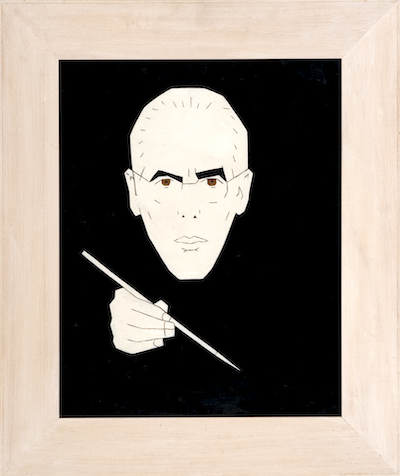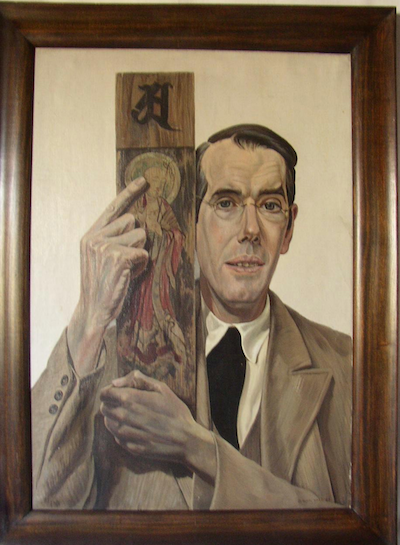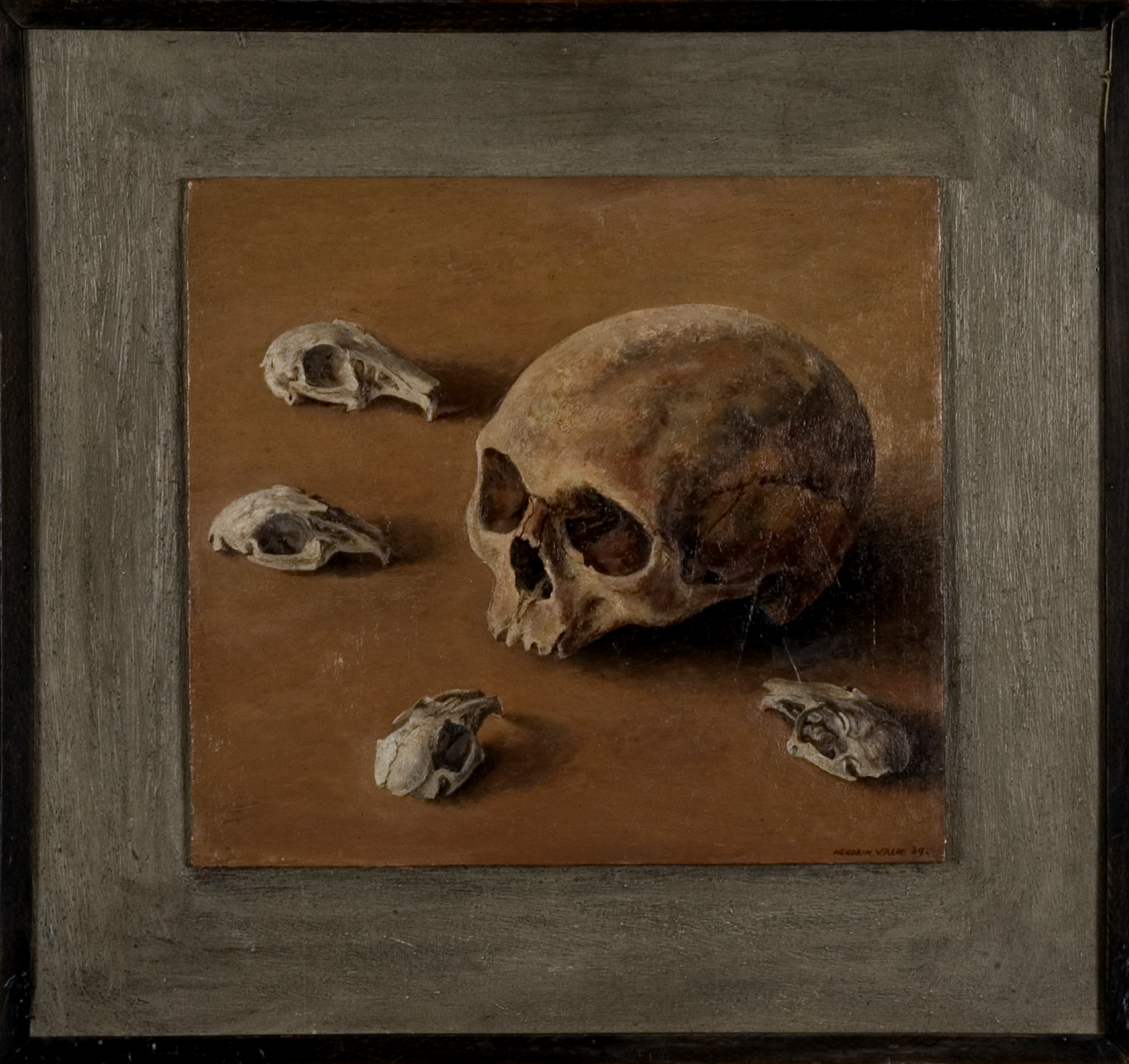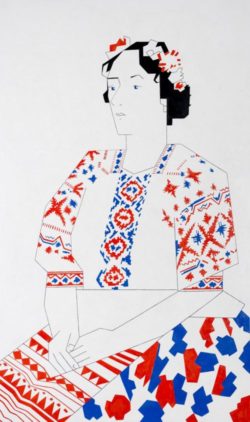Hendrik Valk is born in 1897 in Zoeterwoude near Leiden, in a family that loves culture. His father is a senior designer at the silver factory Van Kempen in Voorschoten, his brother Willem Valk is to become a sculptor. In 1912 Hendrik Valk begins his studies at the Royal Academy of Art in The Hague.

Selfportrait, 1938
After graduation in 1916, he spends his first years as an artist looking for and developing a personal style. He earns a living by teaching art and working as a political cartoonist for newspapers, meanwhile het experiments with realism, expressionism and abstract art. Gradually, he develops his very distinctive style of straight lines and a minimum of colour. Leaning towards abstraction but never abandoning figurative painting, he succeeds in bringing the objects back to their very essence. His process usually starts out with a naturalist drawing, which he simplifies step by step, until a composition of lines and surfaces remains that evokes the ‘full picture’.
His personal style is noted by the Leiden-based Theo van Doesburg, front man of ‘De Stijl’ movement. Indeed, Valk’s style is closely related to the manner of some of its members such as Theo van Doesburg himself, Vilmos Huszár, Bart van der Leck and Piet Mondriaan. “Het Ontbijt” (Breakfast), a large painting now in the Museum De Lakenhal is a clear proof of that. Nevertheless, Valk never accepts the offer of becoming a member of “De Stijl”. He remains an individual artist for the rest of his life.

Selfportrait, 1933

The German Invasion of Poland, 1939
In the 1930s, Valk abandons his personal style temporarily, painting a number of works in a neo-realistic style, often with a slightly surrealistic meaning. In other paintings Valk comments upon the rise of national-socialism and the threat of war looming over Europe.
After the war Valk resumes his duties as an art teacher at the academy. Working in his home studio every night, he returns to his personal minimalist style which he brings to full maturity. Once retired from his duties at the academy, his productivity peaks. He paints portraits, flower still lives, landscapes and religious representations, sometimes based on sketches that date back decades.
After his long career Hendrik Valk passes away in 1986. Since then his work is increasingly appreciated by experts and public alike. In recent years for instance, there were exhibitions in Amersfoort (2014), Leiden (2015) and Oss (2019).

Sjoereska in Russian costume, 1963
Many of Valk’s artworks are in the possession of collectors and museums in The Netherlands. For instance, both Museum De Lakenhal in Leiden and Museum Arnhem have an important collection of his works. In 2021 the most important off all Dutch museums, the Rijksmuseum in Amsterdam, has acquired two paintings by Hendrik Valk, two selfportraits.